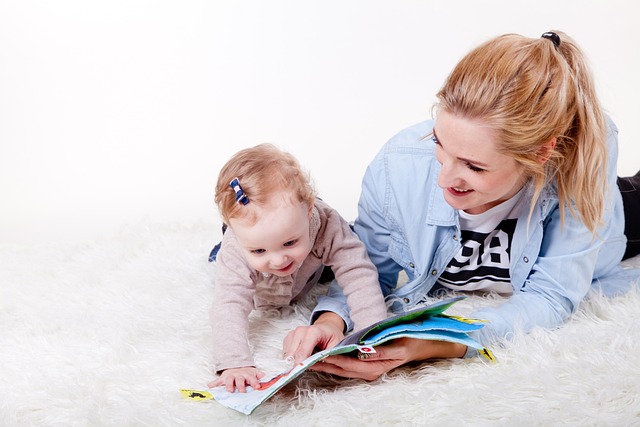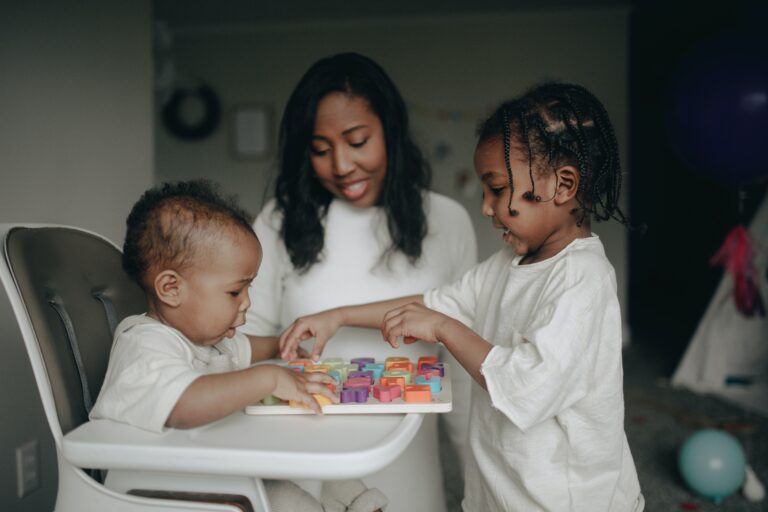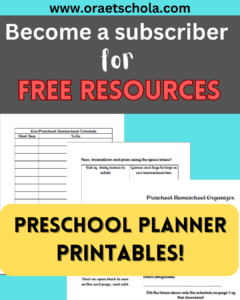Sharing is caring!
How to Develop a Catholic Preschool Homeschool Curriculum for Free
Developing a free preschool homeschool curriculum for your Catholic preschooler doesn’t have to come with a hefty price tag.
You can provide a faith-filled education for your little one without breaking the bank.
From incorporating Catholic values into your daily routine to tailoring a perfect schedule for your little one, this guide will walk you through the steps of homeschooling your child with both love and savings in mind.
As a bonus, we will also discuss how to homeschool an older child with your preschooler.
Overview for Developing a Preschool Homeschool Curriculum
The toddler and preschool stages are so precious.
Your preschooler will learn a lot by implementing the steps below, but the main goal is for you to spend quality time together and instill a deep love of Our Lord.
I will discuss how to create your own preschool homeschool curriculum in 6 steps (plus a 7th bonus step!) so you can:
- Glorify God through all aspects of your day, including school
- Bring peace and structure to your home by implementing a predictable rhythm
- Cover all of the basic academic knowledge your child needs to know
- Design a free preschool program with items you already own
- Give your preschooler quality one-on-one time and keep them busy doing something constructive
Homeschooling preschool can be joy-filled, Christ-centered, and affordable. Read on to bless your preschooler with a loving, fun, and holy school day!
Table of Contents
How do you plan a preschool homeschool curriculum?
For small toddlers (ages 1-3) or children with shorter attention spans, you can plan for school to take about 15-30 minutes. It works well to follow school with free play for a toddler or preschooler so that if school takes longer or shorter than the allotted time, you can direct the child to some toy bins or enlist an older sibling to entertain him or her until our lunch.
I will also include how to keep Christ at the center of your preschooler’s homeschool throughout this section. Here are the steps for planning school for your preschooler:
- Determine a rough schedule based on your family’s natural routine and commitments
- Gather and organize toys and supplies that you already have
- Take inventory of books that you and your preschooler enjoy
- Teach the basics daily
- Dedicate a spot where you will do school
- Plan how many activities you will put out daily
- BONUS: homeschooling with older siblings
Step # 1: Determine a rough schedule based on your family’s natural routine and commitments
Small children crave and appreciate structure and familiar rhythm in their day. Knowing what to expect causes less frustration, tantrums, and meltdowns. Most children have the most energy and attention span in the morning, so the morning is a great time to do schoolwork.
You may also consider doing school when they wake up from their nap later in the day. Do what works for your family! The routine does not need to be strict or rigid.
The first box shows a flexible block schedule and the second and third boxes show how you can add in school and enrichment activities around meals, naps, and daily Mass (which is a huge blessing if you can take your kids at least once a week!). It helps to fill in meals, naps and any extracurriculars or commitments, and then see where school and free play can fit in.
I will talk about music time and enrichment ideas in a different post!
Step #2: Gather and organize toys and supplies that you already have for your preschool homeschool curriculum
GATHER Supplies that could be useful for your preschool homeschool
You probably already own many fun and educational toys and supplies in your home, especially if you have multiple children! If this is your first child, make do with what you already own and consider compiling a list to give grandparents and family for Christmas and birthdays.
The best early childhood toys allow for open-ended play. You can also DIY matching or sorting games with things from around the house. I will include links to free resources at the bottom of this blog post!
Some useful toys for your preschool homeschool are:
- Saint and bible characters and dolls for catechism lessons like these
- Simple puzzles (the ones with the knobs or spots to match each piece)
- Wooden blocks and Duplos
- A baby doll
- Random kitchen tools like ice trays and small cups
- Matching games (make your own out of cardstock or index cards)
- Sorting games (make your own with pom poms, small colored blocks, laminated pieces of paper in desired shapes and colors). You can also use game pieces from checkers, chess, monopoly etc and even math manipulatives from your older kids. Use your discretion with small pieces.
- Magnets and a cookie sheet
- Puppets (DIY or from the store)
- Playdoh
- ANY toy or game with small pieces that you can put aside for school time
- paper and crayons
2. ORGANIZE all of your preschool homeschool supplies in one place
Once you have gathered all of the toys and supplies you want to use for school, keep them together in a safe place. This can be a bin, closet, or high shelf that cannot be accessed by your preschooler, and the contents will only be used for school time.
An exception to this is game pieces or supplies used by older children. Store those in their normal places.
This actually simplifies your life in two ways: 1. You have a dedicated place for preschool supplies that you can easily access and 2. You have simplified the process of keeping puzzle pieces and any toys with random pieces from getting lost. Win, win!
Step #3: Take inventory of books for your preschool homeschool curriculum
Reading to children from a young age is so beneficial. Whatever books that you have on hand will work perfectly for preschool. Personally, I leave our toddler’s books on a shelf and do not feel the need to keep them with the school supplies mentioned above.
I just go to our shelf and choose 3 books for preschool each day plus a bible and saint book and return them all to the shelf after school is finished. We also utilize our public library heavily for books for all of our children. It is nice to be able to borrow seasonal books from the library or books on certain topics to align with whatever my older children are learning.
If you do not have a library card, I highly recommend signing up for one and figuring out how to do interlibrary loans if that is something your library offers.
Our library does not have a lot of good children’s Catholic books, so this is something worth investing in. Books are also a wonderful thing to add to Christmas and birthday lists.

Step #4: Teach the basics daily for your preschool homeschool curriculum
There are certain topics that you will cover daily with your toddler. You should definitely include songs and finger plays when possible. Repetition is key, and children easily learn by doing and hearing something over and over.
You also do not have to cover all of these basics everyday. You can choose a few and rotate. As the child masters each concept, gradually move on to more difficult concepts. For example, you will progress from letter sounds to blending the sounds, and you will progress from counting to basic arithmetic.
Some basics to consider covering in your daily rotation are:
- Bible stories and saints: Teach Bible stories and the saints by reading a story a day each from a bible and a saint book. This bible is great for 1-2 year olds, and this ABC saint book teaches saints and the alphabet at the same time! You can also find free saint stories online like these.
Once you finish the bible and/or saint book, either read them again or choose another. I also like to leave my toddler a saint coloring page for him to do first thing. Shining Light Dolls has free ones for every month here
- The ABCs: teach your child the song and teach the letters visually with a chart (it can be homemade). You should also teach the letter sounds. Even from a young age, children can pick these up to help them read in the future. This video shows a fantastic method for teaching small children the letter sounds.
- Counting to 10 and beyond and then basic addition and subtraction – use songs and flashcards/chart and toys
- Colors – use songs and flashcards/chart and toys/puzzles
- Shapes– use flashcards/charts and toys/puzzles
- Nursery rhymes – use puppets and finger plays

Step #5: Dedicate a spot where you will do school
It is very helpful to have a small table and chair for your preschooler to have a dedicated spot to do school. You will also want some simple shelves to display the day’s activities and tasks.
At the very least, you can do school at your kitchen table or around a coffee table, but I highly recommend a little folding table like this one especially if your little one wants to do any coloring or writing activities. Maybe after you clean out the toys and puzzles that you chose to use for school you will free up some shelf space!
Step #6: Plan how many activities you will put out daily for your preschool homeschool curriculum
This may take some trial and error for you to figure out. You may start out with 10 tasks for your child, but if this is too many try putting out fewer the next day until you find the sweet spot. Here is a sample plan with 8 activities:
- Read the Bible
- Read about a saint
- Sing the ABCs with a letter chart
- Count to 10 with your fingers
- Sing a finger play or nursery rhyme
- Read 3 board books
- Do a puzzle
- Do another toy or activity
Step #7 BONUS: How do you homeschool an older child with a toddler?
One excellent reason to institute school time for your preschooler or toddler at home is that it will actually help you homeschool your older children. If you give your smaller child one-on-one time first, you will fill their cup so that they will then be happy to play independently or play with another family member.
You can play with, sing, read to your toddler while your older children start their independent work. The benefit of having toys that only come out during school is that your toddler will want to spend extra time playing with them since they seem more special.
After your toddler is satisfied and playing or coloring independently, you can give your attention to each child from youngest to oldest. After working with you, your older children can then keep an eye on the toddler while you work with the remaining children.
Read more about creating a daily homeschool schedule for your family here.
You really can develop a preschool homeschool curriculum for free
Preschool at home will rarely go perfectly as planned. Even if you don’t finish singing the ABCs or counting everyday, just enjoy this quality time with your child. The early years are for bonding and having fun with mom and dad. God will always give you the grace to do what He needs you to do when He needs you to do it.
The toddler and preschool years are precious and chaotic! In order to enjoy this time and reduce the chaos, consider adding some structure with a preschool homeschool routine or rhythm. Before spending any money, shop your own cabinets and shelves. Preschoolers will remember feeling loved and happy more that they will remember having lots of fancy things. May God bless you and your family! I am praying for you! Please pray for me!
Want a free printable to help you organize your preschool homeschool curriculum and schedule?
Subscribe below to gain access to our subscriber library which includes a free Preschool Homeschool Curriculum organizer and planner template as well as many other useful resources! The library is being updated frequently, so be sure to subscribe so you don’t miss out!
Our other favorite free resources for teaching preschool
Coming soon!
Sharing is caring!

